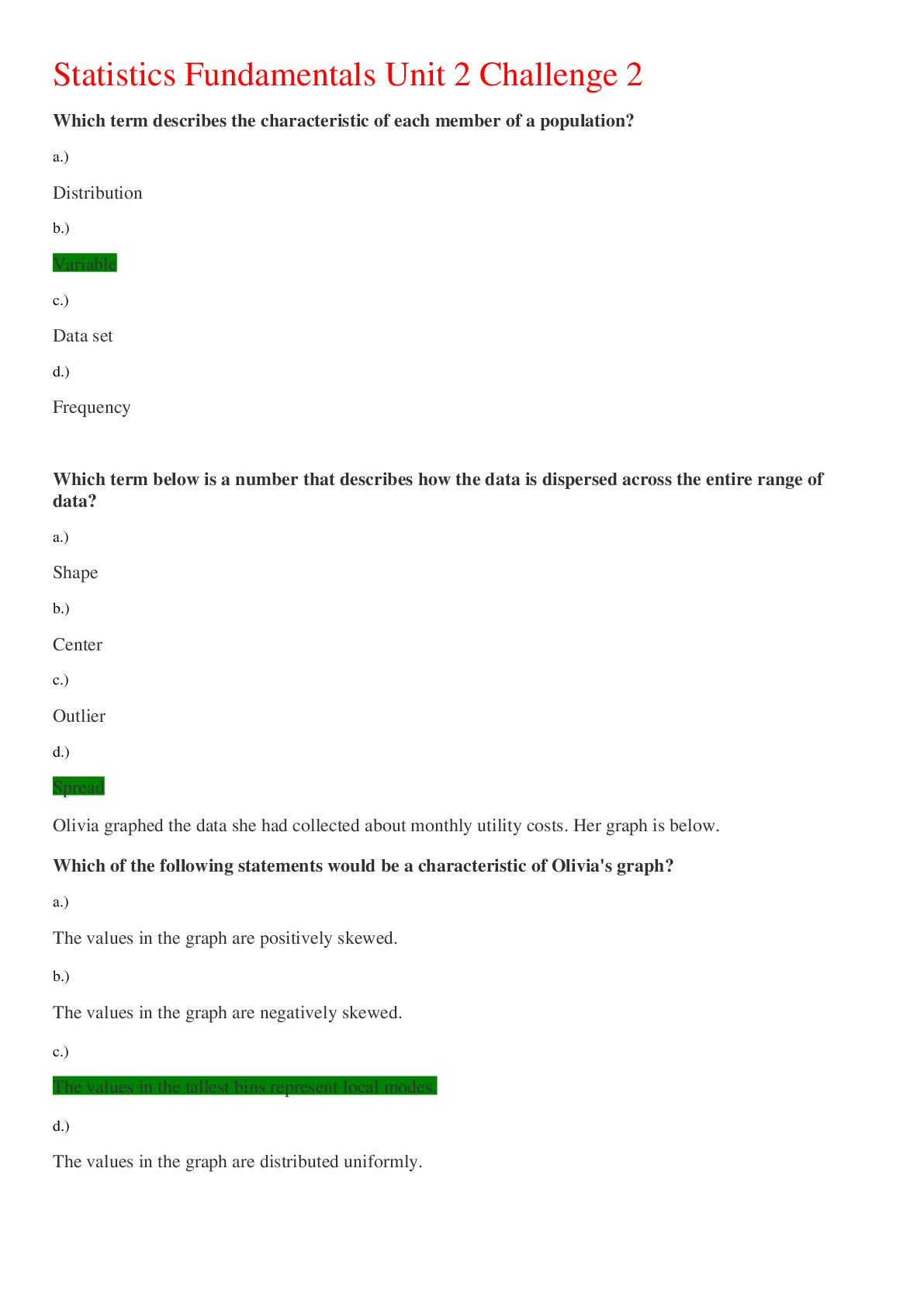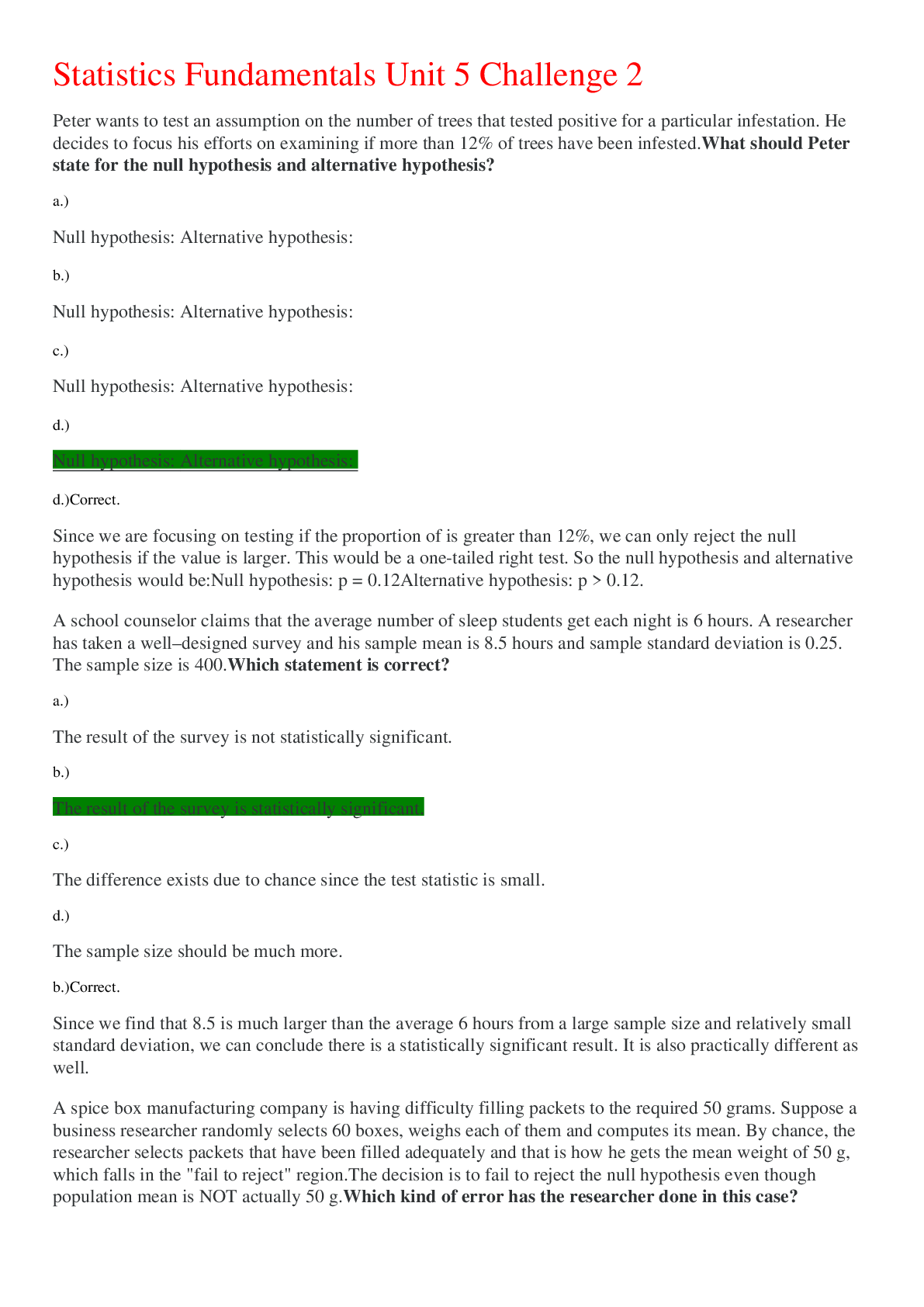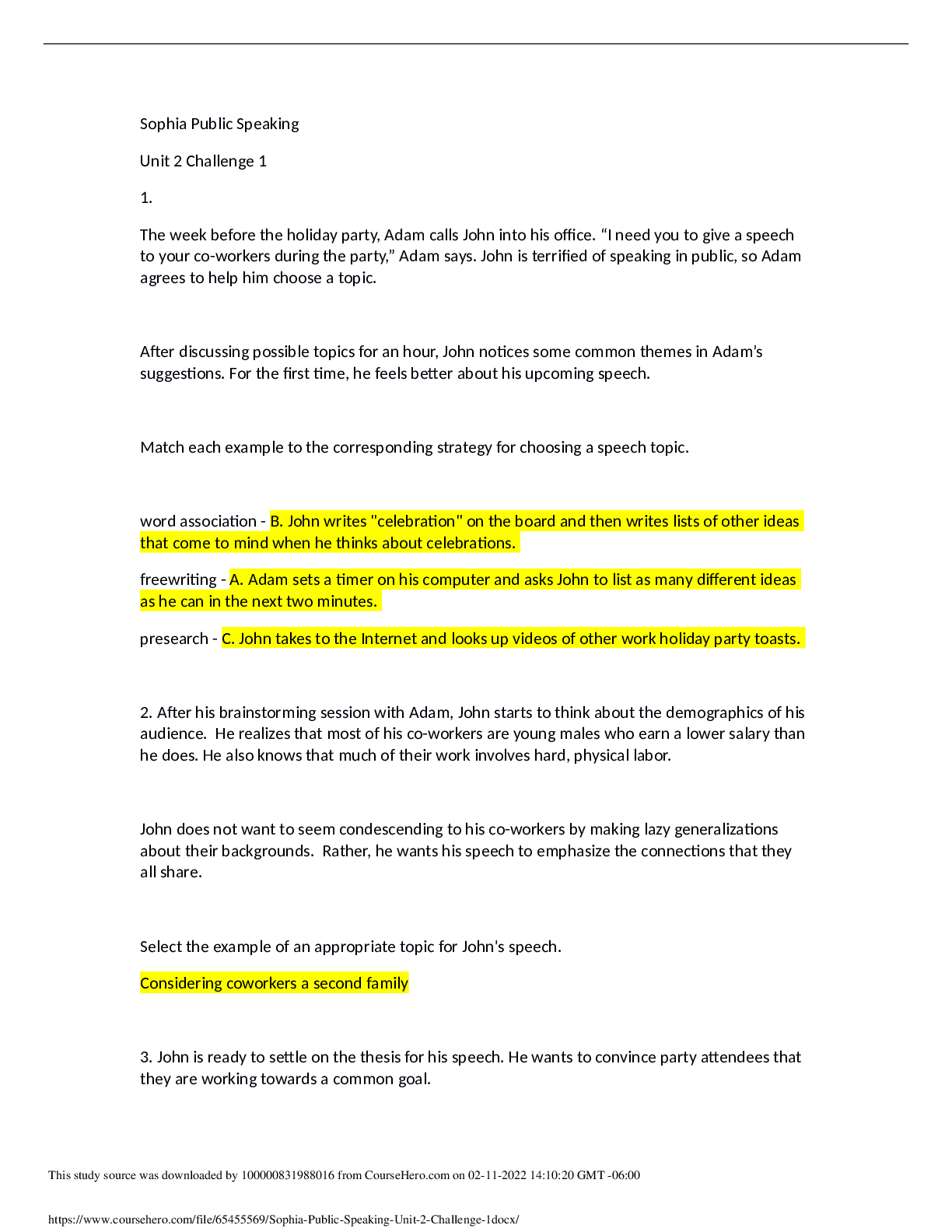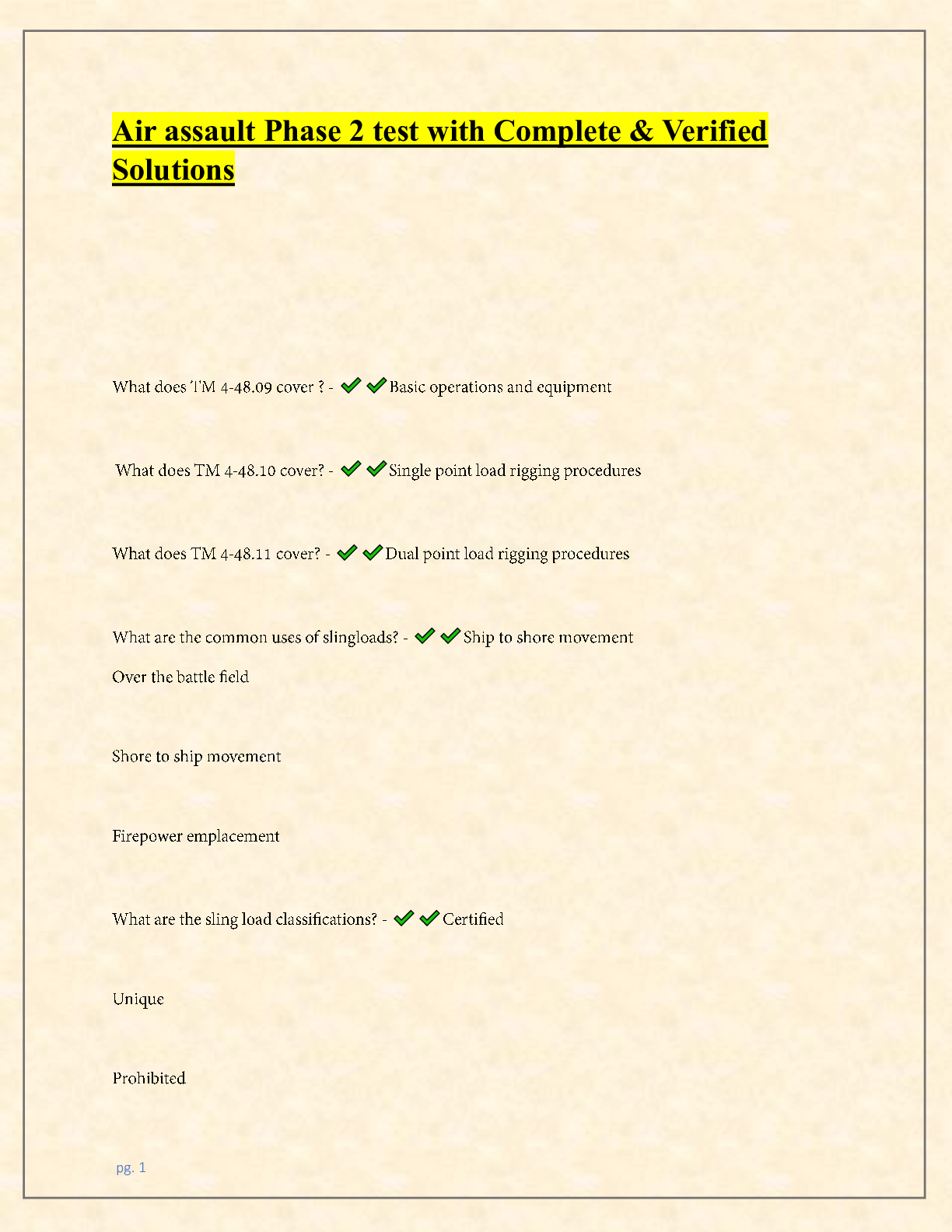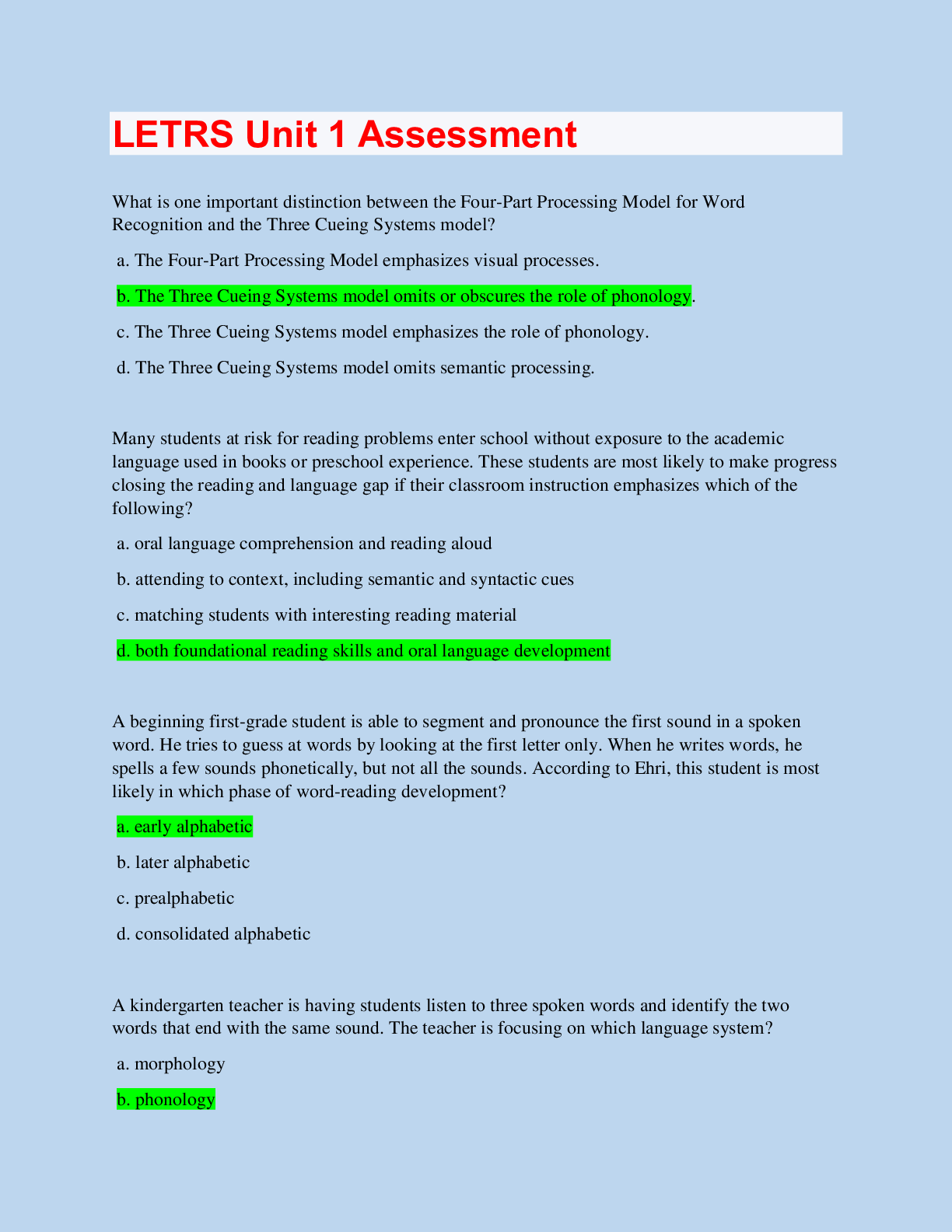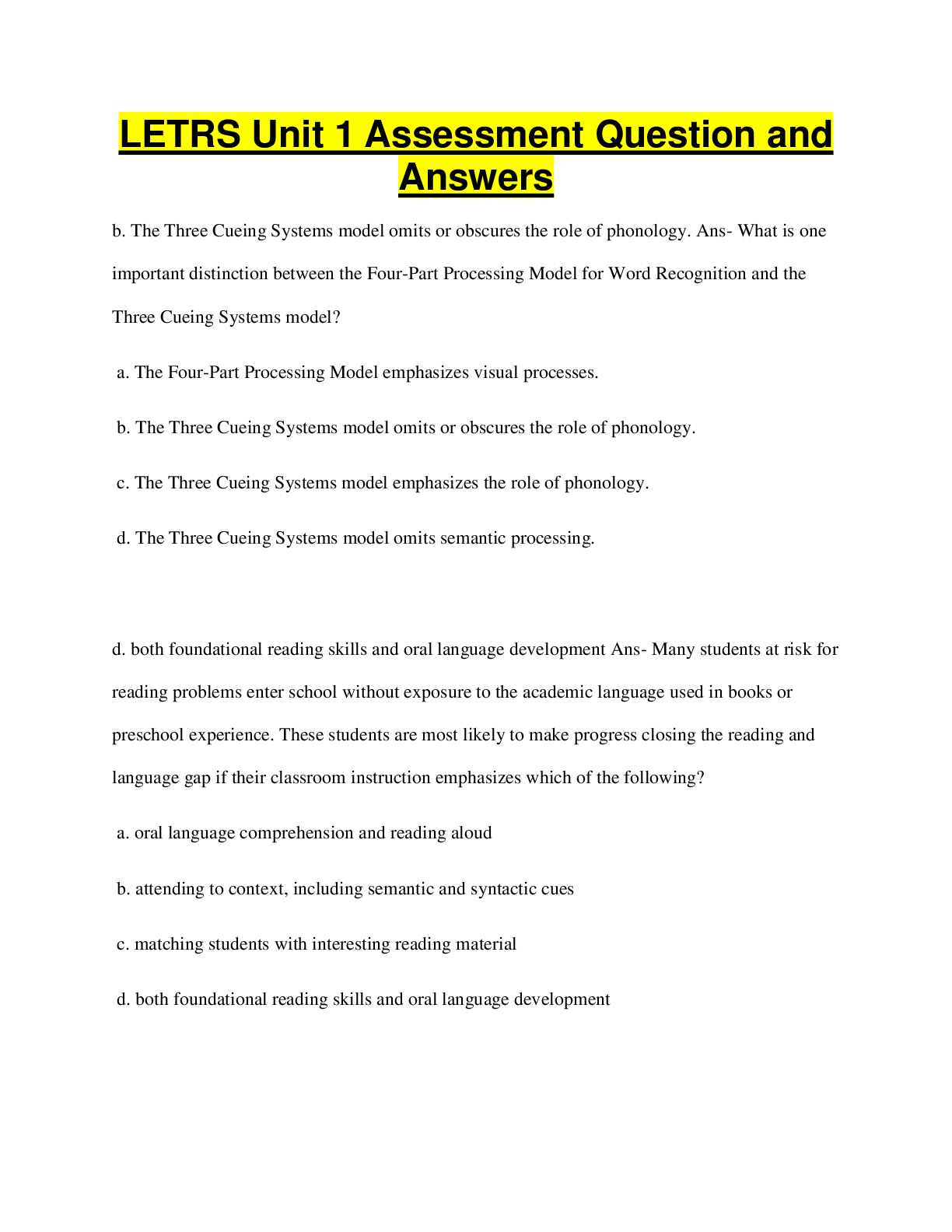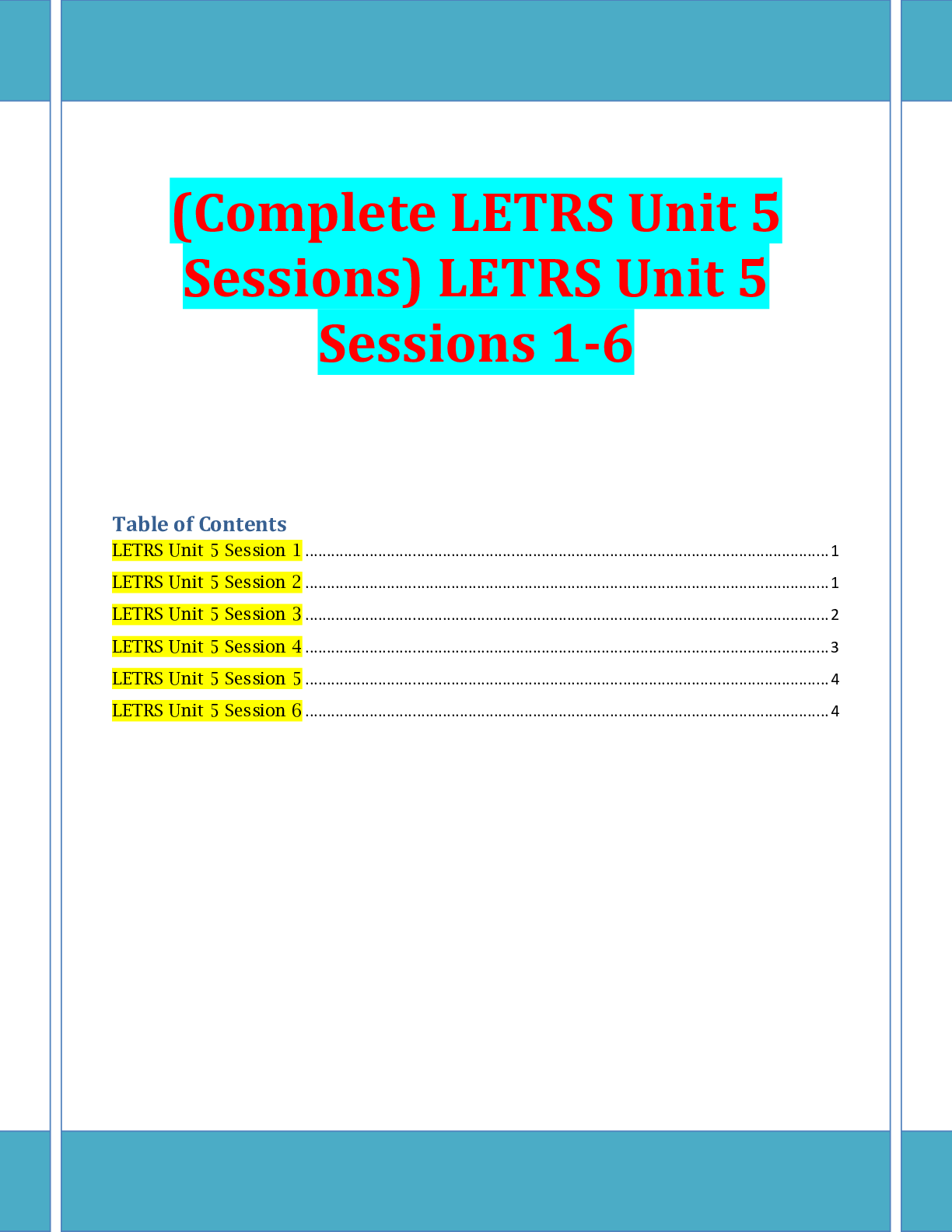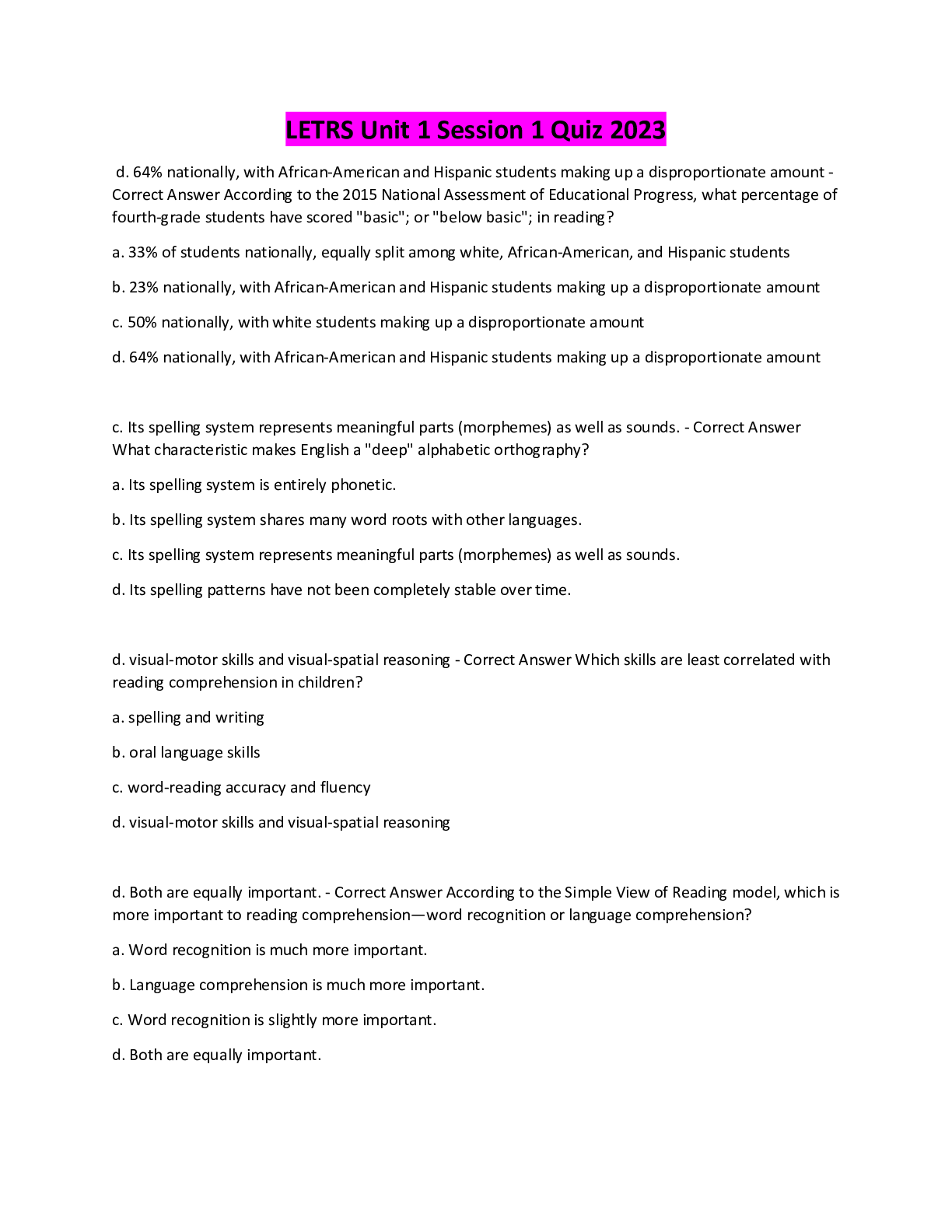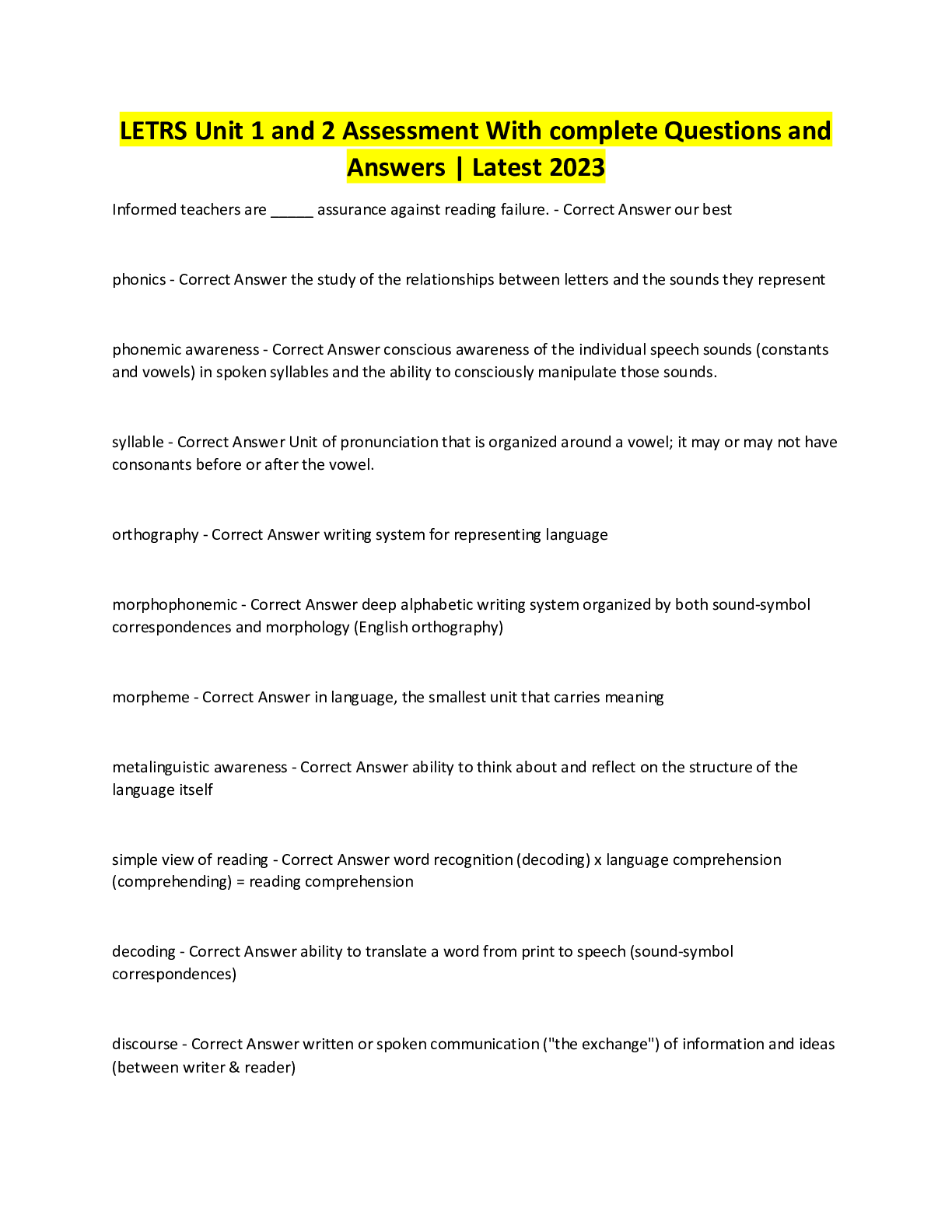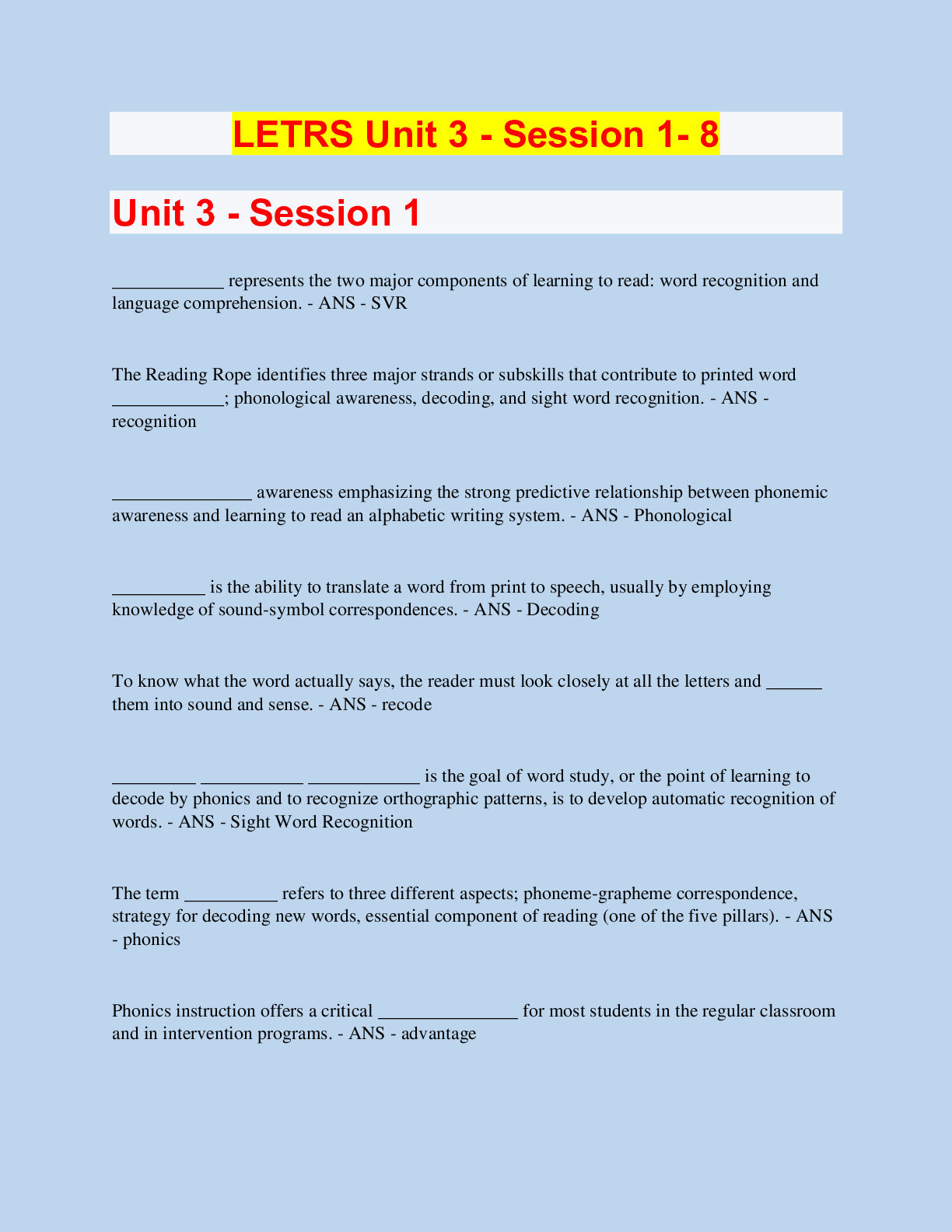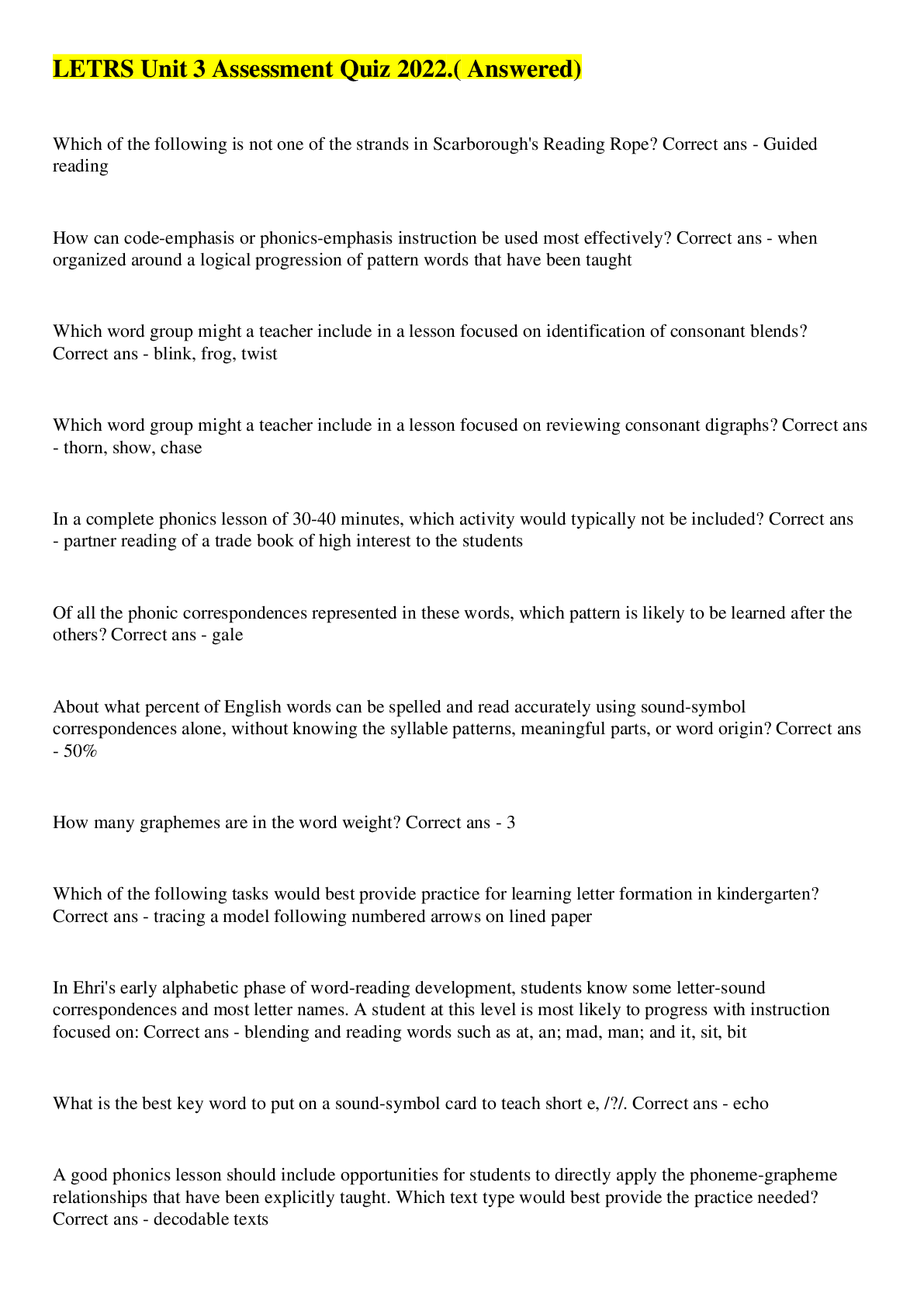Communication > EXAM > Sophia Public Speaking Unit 2 Challenge 2,100% CORRECT (All)
Sophia Public Speaking Unit 2 Challenge 2,100% CORRECT
Document Content and Description Below
Ms. Anderson teaches history at a local high school. Before one of her lessons, she overhears students debating the validity of news stories shared on social media. One story linked apples to cancer. ... Another claimed a U.S. senator ran a gambling ring. When class ends, Ms. Anderson asks four students — Robert, Laura, Alicia and Colin — to describe claims they had found. Stunned, Ms. Anderson asks, "Did you read these stories closely?" Her students shrug. They hadn't researched the stories beyond reading the initial articles. Determine whether each of the following news stories is Credible or Not Credible. 2 Realizing that “fake news” stories are a real issue for her students, Ms. Anderson addresses the group: “I have an idea for an extra credit project. I want you to research the credibility of a news story you find posted on social media and present your findings to the class.” Robert decides to investigate a story describing how vegetarianism puts a person's health at risk. He is unsure of the best way to begin the project. Select the two statements that describe effective ways of preparing credible research for a presentation. 3 Alicia and Laura walk home together. Both plan to start their projects by conducting research online. "I'm more comfortable working on the Internet than in the library," says Laura. "I'm sure there are advantages of going to the library, but there's so much information online I feel like I should be set." Alicia nods. "I guess we could always try the library if we're having trouble." "How many sources do we need?" Laura jokes. Determine whether the following methods of finding information represent general Internet research or library research. 4 Alicia looks online for a project topic. After browsing several social media sites, she settles on a recent claim about how eating cafeteria food for lunch affects a student's chances of graduating from college. Intrigued, she begins searching for evidence that either supports or debunks this claim. One hour later, Alicia is overwhelmed. The amount of information available online is massive, and much of it seems questionable. “I need to ask Ms. Anderson for advice,” she says to herself. Select TWO descriptions of Internet sources that can be considered credible. 5 Laura chooses to focus on a news story claiming a politician had recently made insulting remarks about people who live in poverty. She browses the Internet for more information about this story, and notices that some articles list facts while others rely on provoking a reader's emotions. "Some stories don't even seem to care about providing real evidence," Laura says to her mother when describing the project. She realizes she had likely been fooled by some of these articles in the past. Match each appeal to the type of supporting material it uses. C Intuition B Statistic A Testimonial A. A state governor talks about the great working relationship he has with the city council candidate. B. An article notes that 85 percent of grocery stores sell doughnuts in their bakery. C. A blog writer claims that he will not drink milk because he thinks it makes his skin look bad. D. A saleswoman states that she doesn’t like the mayor because he was rude when he came into her store. 6 Colin is finally ready to start on Ms. Anderson's project. While posting on a social network, he notices an article claiming white flour is capable of poisoning the bodies of those who ingest it. Colin knows he consumes white flour as part of his diet, so he chooses to investigate this subject further. As Colin investigates, he notices that most of the stories shared on social media have obvious flaws. Select the statement that represents a good example of supporting a claim. 7 Robert is studying the effects of a vegetarian diet on the human body. He has written a speech, but he worries that his description of the body’s response to a vegetarian diet is too complicated. He approaches Ms. Anderson before class and asks for advice. "Try adding hypothetical examples to your speech," she suggests. "It might make it easier for the class to understand." Rate the following statements as a Brief, Extended, or Hypothetical example. 8 For her research, Alicia focused on an article claiming students who eat school cafeteria lunches are four times as likely to graduate from college. As she continued her research, she noticed more articles on this subject that made questionable statistical claims. Alicia gathered all of these statistics on a single sheet of paper for her presentation. The sheet elicits laughter from the students as it is passed around the room. "I expect you will avoid using evidence like this when doing a project for me," Ms. Anderson warns. Select the statistical claim that credibly supports an argument. 9 Colin presents his findings in class. His topic — stories addressing effects of white flour on a person's health — features scientific terminology and descriptions of complex bodily functions. Colin was unsure of the best way to present this information, but Ms. Anderson helped him decide on some useful tools. Colin breaks down the material with analogies, definitions, and visual aids. He can tell his classmates are following along, as they nod in agreement during these points of his presentation. Match the description of public speaking with the type of supporting material it features. C Analogy A Definition B Visual Demonstration A. A professor begins a lesson on run-on sentence by first explaining what differentiates a sentence from a fragment. B. A local school board member presents a scaled model of the proposed plans for a new elementary school. C. A CEO begins her holiday speech with the phrase: “Work parties are just like the first day of kindergarten…” D. A horticulturist tells the members of a local gardening club about how she first developed an interest in flowers. 10 It is Laura's turn to make her presentation. She has concluded that claims about a politician making disparaging remarks against poor people were false. She found evidence suggesting the politician has made outreach to the poor his goal. Laura describes an encounter the politician had with a homeless family that was relayed in a news article. The encounter informed his policy, including efforts to make homes more affordable. Laura adds words like "humbled" and "altruistic" to her presentation to make the politician seem more relatable. Laura used narratives to help persuade her audience. Which of the following is NOT a best practice when using narratives? [Show More]
Last updated: 1 year ago
Preview 1 out of 5 pages
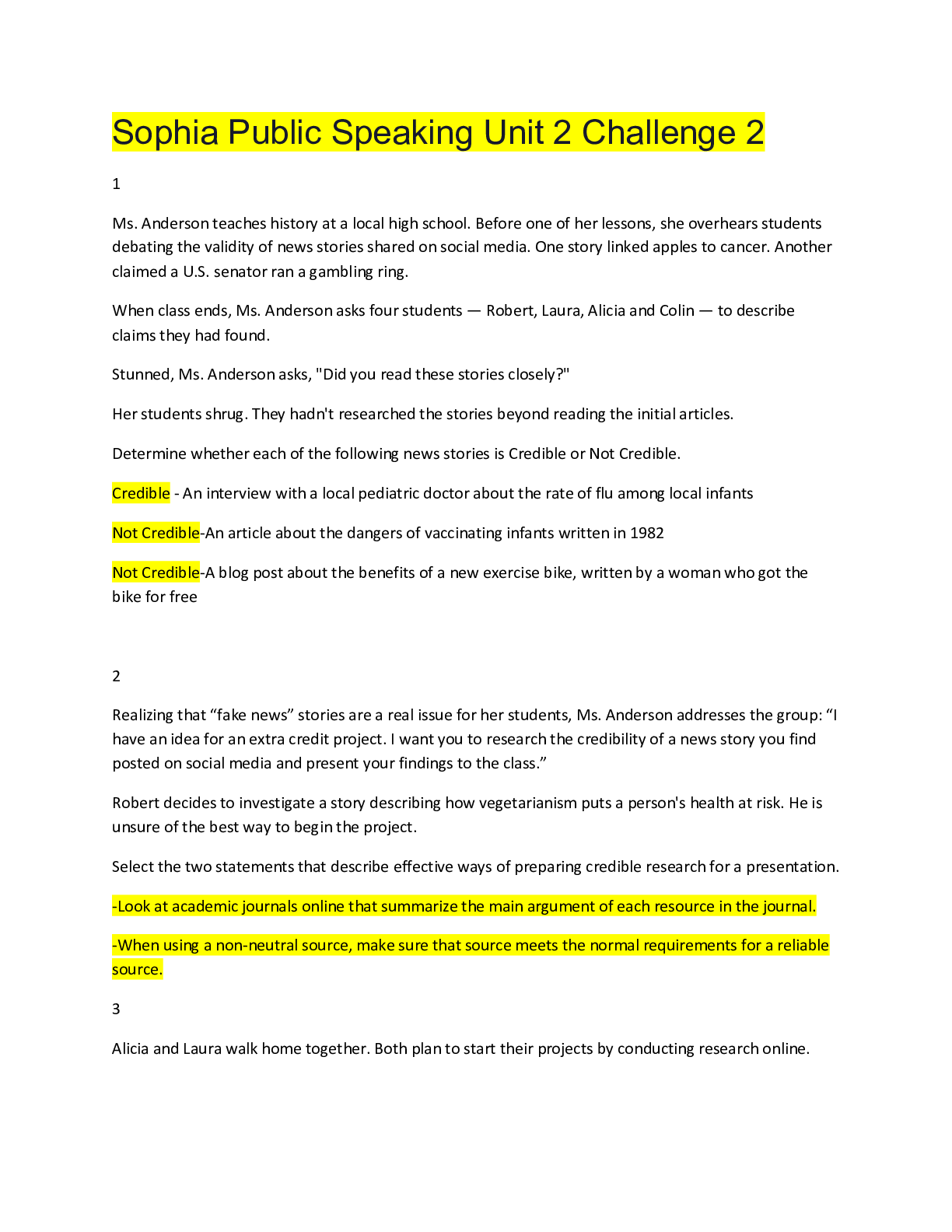
Reviews( 0 )
Document information
Connected school, study & course
About the document
Uploaded On
Oct 20, 2020
Number of pages
5
Written in
Additional information
This document has been written for:
Uploaded
Oct 20, 2020
Downloads
0
Views
337

















